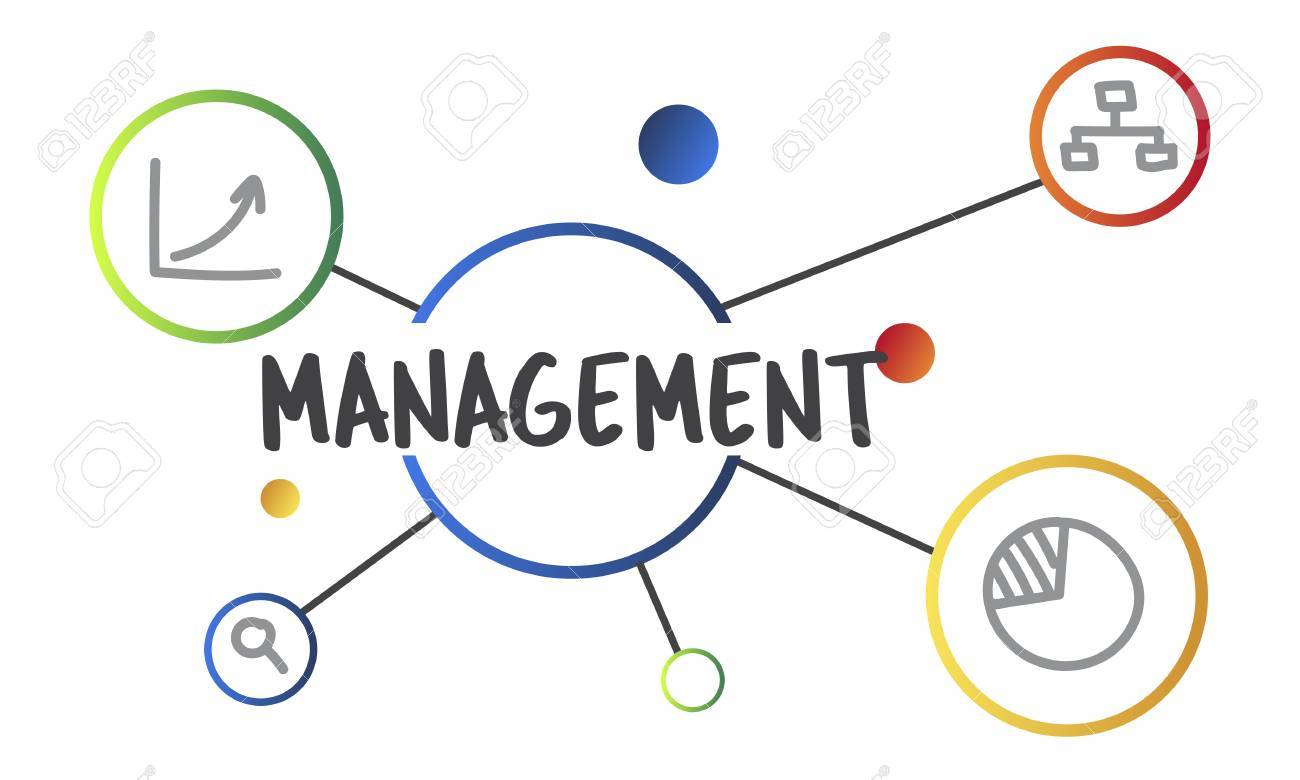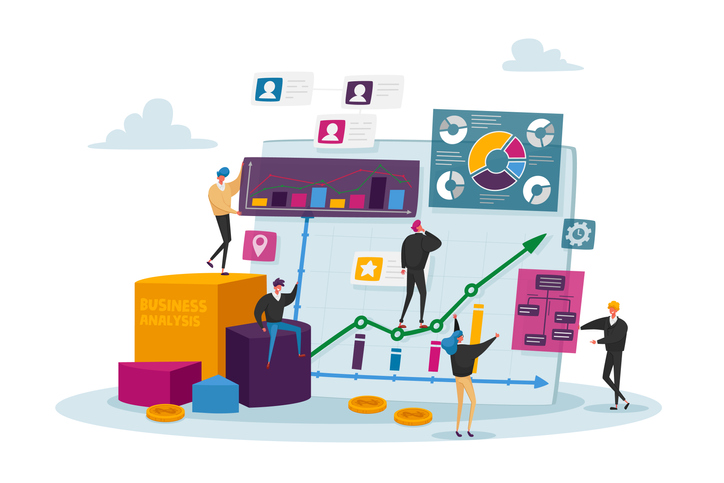SAFe Agilist: What You Need to Know Before Pursuing This Career Path
SAFe Agilist: What You Need to Know Before Pursuing This Career Path
Blog Article
SAFe Qualification: Empowering Leaders in Scaled Agile Frameworks
The landscape of project administration is developing, and SAFe Certification stands as a crucial aspect for leaders seeking to implement the Scaled Agile Framework efficiently. The journey to becoming a certified SAFe leader includes more than simply acquiring expertise; it encompasses recognizing the nuanced duties and duties within active atmospheres.
Comprehending SAFe Accreditation
SAFe accreditation, which means Scaled Agile Framework certification, is a credentialing program designed to equip experts with the understanding and skills required to implement agile techniques at scale within their companies. The SAFe framework provides a structured technique that helps companies straighten their teams and manage bigger jobs effectively, guaranteeing that nimble methodologies are used constantly across different degrees.
The accreditation encompasses numerous functions, including SAFe Agilist, SAFe Practitioner, and SAFe Program Specialist, each concentrating on various facets of the structure. The program stresses the significance of lean principles, continuous delivery, and collaboration among teams, cultivating a setting for advancement and performance.
Participants undertake strenuous training that incorporates theoretical understanding with practical application, enhancing their ability to lead agile improvements. The educational program consists of topics such as active groups, program implementation, and profile administration, guaranteeing that licensed experts are skilled in all aspects of the SAFe method.
Advantages of SAFe Qualification
Getting a Risk-free qualification uses numerous benefits for specialists wanting to boost their occupations in agile project monitoring. Most importantly, it equips people with an extensive understanding of the Scaled Agile Structure, enabling them to efficiently execute nimble principles throughout huge organizations. This knowledge is essential as services progressively take on dexterous methodologies to improve productivity and adaptability.
Additionally, SAFe accreditation improves a candidate's marketability and profession potential customers. As organizations look for licensed experts to lead their nimble improvements, licensed individuals can regulate greater wages and attract attention in an affordable task market. Moreover, obtaining this accreditation demonstrates a commitment to continuous understanding and specialist advancement, which is very regarded by employers. SAFe For Architects.
Networking possibilities also occur from SAFe certification, attaching individuals with a neighborhood of like-minded professionals and sector leaders. This can cause collaboration, mentorship, and understanding sharing, further improving one's specialist experience.
Lastly, certified experts are typically much better geared up to promote a society of collaboration and advancement within their groups, driving effective outcomes in dexterous jobs. Overall, the benefits of SAFe certification are manifold, making it an important investment for those in the dexterous project management domain name.
The Qualification Process
The trip to attaining SAFe certification involves a structured procedure designed to ensure candidates are well-prepared for nimble leadership duties. This process typically begins with selecting the proper SAFe certification that lines up with one's career aspirations and business requirements, such as SAFe Agilist, SAFe Specialist, or SAFe Program Specialist.
Prospects are after that encouraged to take part in an extensive training program, usually performed by an accredited SAFe fitness instructor - SAFe For Architects. These programs cover essential principles, concepts, and methods of the Scaled Agile Structure, providing participants with beneficial insights and useful knowledge
Complying with the training, prospects must pass a qualification exam to demonstrate their understanding and proficiency in applying SAFe principles. The exams are developed to evaluate not just understanding yet also the ability to carry out nimble methods efficiently within a scaled environment.
When certified, people acquire accessibility to a wealth of sources, including area networks and recurring knowing opportunities, which additionally improve their nimble management abilities. Maintaining certification requires continual specialist growth, making certain that leaders stay existing with progressing methods within the structure. Inevitably, the accreditation process is an extensive yet rewarding path for those intending to succeed in nimble leadership.
Responsibilities and roles
Efficient implementation of the Scaled Agile Framework (SAFe) depends heavily on plainly defined functions and responsibilities within an organization. These duties are crucial for guaranteeing positioning, performance, and reliable cooperation across groups.
At the group degree, vital roles consist of the Scrum Master, Item Proprietor, and Agile Group Members. The Scrum Master facilitates the dexterous process, ensuring that the team complies with the SAFe principles while removing obstacles. The Product Owner is accountable for optimizing the worth of the product and taking care of the backlog to straighten with organization goals. Agile Team Members add their specialized skills to supply top notch increments.
At the program level, the Release Train Engineer (RTE) plays an essential role in managing the Agile Release Train (ART), ensuring smooth program implementation and alignment across multiple groups. In addition, the system engineer and company owner supply technological advice and calculated vision, respectively.
Constant Enhancement in SAFe
Constant improvement is a keystone of the Scaled Agile Framework (SAFe), driving organizations to boost their processes, products, and total performance. By cultivating a society of constant renovation, SAFe encourages teams to routinely examine their results and process, identify inefficiencies, and implement approaches for improvement. This repetitive process not only boosts efficiency however likewise straightens teams with the organization's strategic objectives.
Central to this strategy are the Inspect and Adapt (I&A) workshops, which offer structured chances for representation and learning. During these sessions, teams evaluate efficiency metrics, discuss obstacles, and generate workable insights to assist future versions. Additionally, using Agile Release Trains (ARTs) promotes cross-functional cooperation, enabling teams to share best practices and drive collective enhancement.
Additionally, Lean-Agile leadership plays a critical function in promoting a state of mind of constant renovation. Leaders are tasked with cultivating an atmosphere where trial and error is urged, and failures are considered as discovering chances. By installing continual enhancement right into the business culture, SAFe empowers groups to continue to be dexterous and responsive to altering market demands, eventually boosting their capacity to deliver worth to consumers.

Verdict
In verdict, SAFe Accreditation serves as a crucial tool for leaders intending to implement active practices efficiently within their organizations. Eventually, SAFe Qualification adds substantially to business success and durability.
The landscape of job administration is advancing, and SAFe Certification stands as a crucial aspect for leaders looking for to carry out the Scaled Agile Framework successfully.Getting a Risk-free accreditation offers many advantages for specialists looking to improve their jobs in agile task monitoring. The Scrum Master assists in the nimble process, making certain that the team adheres to the SAFe principles while eliminating obstacles. By embedding continuous enhancement into the organizational culture, SAFe encourages teams to remain receptive and agile to altering market demands, inevitably boosting their ability to provide worth to clients.

|
Master Agile Practices With Comprehensive SAFe Certification
In a significantly intricate organization landscape, understanding Agile techniques with thorough SAFe accreditation has actually become an important expertise for specialists aiming to improve business efficiency. This accreditation not only provides a deep understanding of the Secure framework but additionally grows vital abilities for promoting partnership and alignment amongst groups. As organizations seek to navigate the difficulties of quick adjustment, the implementation of SAFe principles provides a path to boosted results. The trip to accreditation entails more than simply theoretical knowledge; it needs a critical strategy to application that can considerably influence company agility. SAFe Lean Portfolio Management. What does this entail?
Comprehending SAFe Structure

At its core, the SAFe framework comprises four degrees: Group, Program, Large Solution, and Profile. Each level addresses details elements of Dexterous shipment, from taking care of tiny groups of developers to managing numerous programs and lining up strategic initiatives with business goals.
SAFe encourages collaboration amongst cross-functional groups, cultivating a setting where constant improvement and technology are paramount. By highlighting alignment, openness, and built-in top quality, the structure gears up organizations to react promptly to market modifications while supplying worth to clients.
In addition, SAFe sustains various methodologies, such as Scrum and Kanban, enabling organizations to customize their method according to particular project demands. This adaptability makes SAFe a robust structure for organizations intending to prosper in a rapidly advancing organization landscape.
Benefits of SAFe Certification
Regularly sought after in the Agile area, SAFe certification uses numerous benefits for professionals and organizations alike. Among the key advantages is the improvement of abilities and expertise in executing the Scaled Agile Structure (Risk-free), which outfits individuals with the devices required to drive effective Agile improvements. This certification indicates a commitment to expert advancement, making candidates a lot more affordable in the job market.
For organizations, having actually certified experts fosters a society of constant enhancement and partnership, essential for adapting to altering market needs. It makes it possible for teams to straighten their work with strategic goals, inevitably improving efficiency and effectiveness. Firms with a greater percentage of SAFe-certified employees often experience decreased time-to-market and enhanced top quality of deliverables.
Additionally, Risk-free qualification assists in networking possibilities with other Agile specialists, enabling the exchange of finest techniques and experiences (SAFe DevOps certification). This joint network can significantly contribute to individual and organizational growth. In summary, obtaining Risk-free certification not only enhances individual capacities yet additionally reinforces the total Agile maturation of a company, bring about lasting success in today's dynamic service atmosphere
Key Elements of SAFe
Structure on the benefits of Risk-free certification, understanding the essential components of the Scaled Agile Structure is essential for effectively applying its concepts. The Risk-free framework consists of four primary levels: Group, Program, Big Service, and Portfolio. Each level addresses various aspects of agile methods, assisting in placement and shipment throughout the organization.
At the Team degree, cross-functional groups work collaboratively making use of Active approaches, such as Scrum or Kanban, to supply incremental value. The Program level concentrates on the Agile Launch Train (ART), which is a long-lived team of Agile teams that intends, dedicates, and performs with each other. The Huge i was reading this Service degree addresses intricate services that require numerous ARTs to operate in show, ensuring control and combination.
Getting Ready For SAFe Qualification
Planning for Risk-free accreditation needs a critical method to ensure a comprehensive understanding of the framework. Acquaint yourself with the core concepts and values of the Scaled Agile Structure (Secure) Evaluation resources offered on the Scaled Agile internet site, consisting of the SAFe framework documents, case research studies, and whitepapers, to build a strong foundation.
Following, think about registering in an official Risk-free training program. These training courses, led by licensed SAFe Program Specialists (SPCs), offer structured discovering experiences that cover essential ideas and sensible applications. Engaging with teachers and peers can boost your grasp of the material.
Furthermore, method with example test concerns to acquaint on your own with the style and kinds of concerns you may come across. Signing up with study hall or discussion forums can promote expertise exchange and provide support from fellow prospects.
Applying SAFe in Organizations
Executing the Scaled Agile Framework (SAFe) within organizations requires a structured approach that aligns groups and processes toward an usual objective. The effective application of SAFe starts with establishing a clear understanding of its concepts, consisting of partnership, openness, and alignment. Organizations has to initially examine their existing procedures and determine areas for improvement, guaranteeing they are prepared for the cultural change that SAFe involves.
Training and qualification for teams aid outfit members with the needed abilities and understanding to run properly within the Risk-free structure. This includes establishing Agile Launch Trains (ARTs), which offer as the foundation for providing worth throughout the company.
Regular planning sessions, such as Program Increment (PI) planning, need to be carried out to integrate groups and prioritize job. Additionally, leveraging metrics to determine progress and performance is essential for recurring renovation. By regularly applying Risk-free concepts and techniques, companies can accomplish better dexterity, boost partnership, and ultimately drive far better organization outcomes. Embracing this framework positions organizations to respond promptly to market changes and client needs.

Conclusion
In final thought, understanding Dexterous practices with comprehensive Secure accreditation substantially adds and enhances specialist capabilities to business efficiency. The knowledge obtained from comprehending the Risk-free structure, along with its vital parts, improves and assists in successful improvements cooperation amongst teams.
The SAFe (Scaled Agile Structure) framework offers as a structured strategy for executing Agile practices at range throughout huge companies. One of the key benefits is the enhancement of abilities and expertise in applying the Scaled Agile Structure (SAFe), which equips individuals with the tools necessary to drive effective Agile makeovers. In summary, acquiring Secure accreditation not just improves private abilities however additionally reinforces the total Agile maturation of an organization, leading to sustainable success in today's vibrant organization setting.
Building on the advantages of Risk-free certification, comprehending the crucial parts of the Scaled Agile Framework is crucial for properly applying its concepts.Executing the Scaled Agile Framework (Secure) within companies demands an organized technique that lines up teams and procedures towards a typical objective.
|
Development Your Occupation With SAFE Qualification: Agile Competence Unlocked
In today's quickly developing business landscape, getting SAFe qualification can considerably boost your occupation trajectory by outfitting you with essential agile competence. As business increasingly look for specialists who can lead nimble improvements, understanding the paths to obtain this accreditation becomes critical.
Comprehending SAFe Qualification
SAFe Qualification serves as a critical certification for experts looking for to enhance their occupations in active project administration. Created by Scaled Agile, Inc., the Scaled Agile Framework (Risk-free) provides an extensive method to executing nimble techniques throughout big organizations, making it necessary for specialists intending to navigate complicated task settings properly.
The qualification procedure encompasses numerous levels, including Secure Agilist, SAFe Practitioner, and SAFe Program Expert, each targeting various functions within nimble teams. These certifications are developed to equip specialists with the expertise and tools needed to lead active improvements, foster collaboration throughout groups, and enhance job distribution end results.
Recognizing Secure Qualification entails recognizing its focus on aligning approach with implementation, promoting a culture of continual improvement, and leveraging nimble principles at scale. This structure not only boosts private expertises however likewise adds to business dexterity, making it possible for services to respond quickly to market changes and client needs.
Accomplishing SAFe Accreditation signifies a commitment to professional growth and a solid foundation in dexterous approaches, placing people as important properties in their organizations. By welcoming this certification, experts can boost their ability collection, ensuring they remain affordable in a swiftly developing job market.
Advantages of SAFe Accreditation
Acquiring SAFe Qualification uses various advantages for experts in the dexterous job monitoring arena. This qualification not only boosts private credentials yet likewise demonstrates a dedication to understanding the Scaled Agile Structure, which is increasingly identified by employers. With a Secure accreditation, professionals can confirm their expertise and skills in dexterous methods, making them extra competitive in the work market.
One of the crucial benefits is the capability to lead agile makeovers within organizations. Qualified people are equipped with the tools and methods essential to execute and scale nimble techniques efficiently, driving effectiveness and efficiency. Moreover, companies with SAFe-trained experts commonly experience enhanced positioning across teams, cultivating much better collaboration and development.
Additionally, Secure Qualification opens doors to networking possibilities within the dexterous community. Experts can get in touch with like-minded individuals, share ideal techniques, and remain updated on sector patterns. The accreditation additionally gives accessibility to unique resources, including workshops and webinars, which can better improve one's know-how.
Ultimately, obtaining Secure Certification empowers experts to progress their occupations, add meaningfully to their organizations, and lead the fee in agile quality. SAFe Agilist.
Pathways to Obtain Qualification

To start, prospects usually engage in a Secure training program, which functions as the fundamental step for qualification. These training courses are promoted by SAFe Program Experts (SPCs) and cover important principles, methods, and duties within the SAFe structure. After completing the training, prospects have to pass an accreditation exam to verify their expertise and abilities.
There are multiple certifications offered, such as Risk-free Agilist (SA), Risk-free Expert (SP), and Risk-free Scrum Master (SSM), amongst others. Each accreditation calls for certain training sessions and examinations, enabling specialists to choose a pathway that straightens with their profession objectives.
Furthermore, maintaining Secure accreditation demands continuous education and renewal, guaranteeing that experts remain existing with evolving Agile methods. By purposefully selecting the ideal training and accreditation courses, people can dramatically boost their expertise and profession trajectory within the Agile landscape.
Real-World Applications of SAFe
Applying the Risk-free structure in organizations has verified to be highly effective in boosting productivity and positioning throughout teams. This method promotes cooperation amongst different departments, permitting teams to function in the direction of a merged set of goals. By damaging down silos and fostering interaction, SAFe enables companies to respond quickly to market modifications and customer needs.

Moreover, SAFe contributes in improving task exposure with metrics and reporting tools, enabling stakeholders to make informed decisions. It additionally encourages a culture of continuous enhancement, promoting normal retrospectives and adjustment of methods. Ultimately, the real-world applications of SAFe show its versatility and efficiency in driving effective end results throughout various industries, making it a vital framework for contemporary companies.
Career Improvement Opportunities
The fostering of the SAFe structure not just boosts organizational efficiency yet additionally opens up considerable career innovation chances for experts within the Agile and job management areas. As organizations significantly welcome Agile methodologies, the need for SAFe-certified specialists proceeds to increase, creating a competitive side for those furnished with this accreditation.
SAFe accreditation offers professionals accessibility to a range of roles, consisting of Agile Launch Train (ART) functions, Scrum Masters, and Release Train Engineers. People can transition into management positions such as Program Supervisors or Profile Managers, consequently boosting their obligations and influence within the organization. The accreditation also shows a dedication to constant learning and versatility, top qualities highly valued by employers.
In addition, professionals with SAFe certification typically appreciate greater making potential. Industry reports indicate that you can check here licensed people commonly command salaries that surpass those of their non-certified peers. The networking possibilities managed by SAFe communities can lead to useful connections and career potential customers.
Conclusion
To conclude, acquiring Risk-free accreditation substantially boosts professional credentials in the realm of agile approaches. This certification not only helps with mastery of dexterous methods yet likewise promotes opportunities for career development across numerous duties, consisting of Scrum Masters and Program Supervisors. By equipping people with crucial abilities and knowledge, SAFe qualification promotes leadership capabilities required for driving successful nimble changes within organizations, ultimately contributing to greater earning capacity and useful connections within the agile area.
Acquiring Risk-free Accreditation provides various advantages for professionals in the dexterous task administration arena. With a Secure qualification, specialists can confirm their understanding and abilities in dexterous methods, making them a lot more competitive in the job market.
These training courses are assisted in by SAFe Program Consultants (SPCs) and cover crucial principles, techniques, and functions within the Secure framework.In verdict, acquiring Risk-free qualification significantly boosts professional credentials in the realm of dexterous approaches. By outfitting people with important abilities and knowledge, Risk-free qualification cultivates management capabilities essential for driving successful dexterous transformations within companies, ultimately adding to higher earning potential and useful links within the active community.
} Report this page